Perhaps the biggest appeal of playing a Druid in Dungeons & Dragons is Wild Shape. This class feature gives Druids the ability to transform into any beast they have seen before. There is a long list of beast creatures in the standard Monster Manual and other resources like Xanathar’s Guide to Everything, but some of these forms are just plain better than others. Today, we’ll take a look at which shapes you should be turning into for the greatest impact at your table.
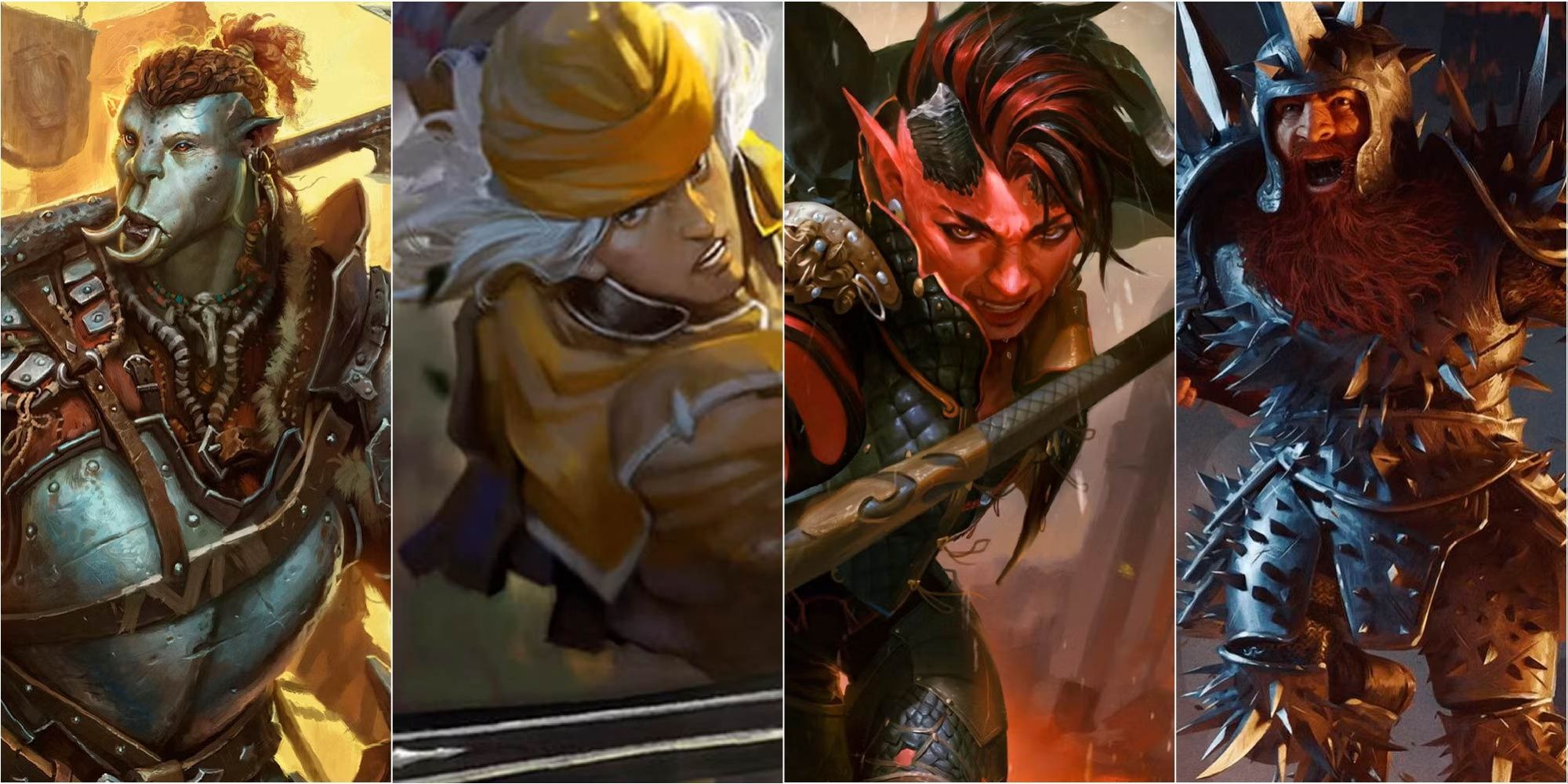
Related
Dungeons & Dragons: The 10 Best Feats For Melee Characters
Improve your melee fighting game in Dungeons & Dragons by picking the best feats for your more martial-focused characters.
All of the following options for Wild Shapes are ranked according to their Challenge Rating (CR). going from the lowest to the highest. The first eight beasts on this list are available to all Druid players, but the best forms are reserved for Druids who take the Circle of the Moon subclass. If Wild Shaping is your primary reason for playing Druid, Circle of the Moon is a necessity. Circle of the Moon Druids should ignore the first few options on this list. Your progression will be different since you gain access to Challenge Rating (CR) one forms at level two.
Updated January 17, 2025, by Alfredo Robelo: The Druid’s Wild Shape ability has been heavily modified in the 2024 Player’s Handbook, but that doesn’t stop it from remaining one of the most useful abilities in Dungeons & Dragons. We’ve updated this article to include even more fantastic beasts for you to transform into, taking into account house rules when needed.
19
Owlbear
Challenge Rating: 3
Owlbears aren’t classified as beasts, they are technically a monstrocity, so they wouldn’t normally be available for druids to wild shape into. However, it is so widely accepted as an available form in both personal campaigns and popular media, that we couldn’t leave them out.
Druids become owlbears in the movie Dungeons & Dragons: Honor Among Thieves, as well as in the video game Baldur’s Gate 3.
As far as what the form gives you, it isn’t all that different from the bear family, able to become a trustworthy tank and shred opponents with several attacks per turn. With a challenge rating of three, the owlbear becomes the best version of the bear that circle of the moon druids can aspire to.
18
Shark
Challenge Rating: From 1/2 To 6
You won’t often need to go underwater during your adventures, often due to the need for specific extra rules for fighting while submerged. In the rare cases where you do need to get your feet wet, the beast family that will help you rise to the occasion are the sharks.
You might quickly ignore the shark at lower levels, since druids can only become aquatic creatures at level four, but that is no longer true for the 2024 rendition of the rules. In the 2024 Players Handbook, druids can turn into aquatic creatures as soon as they gain their wild shape feature, making circle of the moon druids in particular able to turn into these deadly hunters as early as level 3.
17
Giant Sea Turtle
Challenge Rating: 3
While the shark family is your go-to form for underwater offense, sometimes you need a more defensive form. The other big creatures of the land would harmlessly sink in wet environments, but the giant sea turtle can bring its high health pool and 17 points in Armor Class to the front line and excel while doing so.
The form can still be used on land, but its speed is diminished by quite a lot. In those scenarios, a land variation of the turtle would be better, easily modified since what you want most is the AC, and that is all being brought by the shell.
16
Tressym
Challenge Rating: 0
Sure, you can take the ordinary cat form, but why not an equally adorable and useful little monster that also has wings and can see invisible creatures?
If you happen to be playing Storm King’s Thunder you can take the form of a Tressym, provided your Dungeon Master (DM) gives the Wild Shape their blessing. This is an Exploration beast, very handy for spying and reconnaissance, but not great in combat.
15
Spider
Challenge Rating: 0
While it might not be able to fly, the spider is among the best scouting forms available thanks to its tiny size and high stealth modifier. This form is especially good for scouting dungeons as you can crawl beneath most doors and get a lay of the land without alerting any of the dungeon’s inhabitants.
This form can also be particularly useful for traversing any spider-infested corridors of a dungeon as the spider can cross webbing without having to wrestle against it. Of course, this won’t help the rest of your party get through the webbing but maybe they won’t have to!
14
Velociraptor
Challenge Rating: 1/4
Depending on your DM’s world, this form may or may not be an option. If velociraptors aren’t an option at your table, the wolf or giant wolf spider are great alternatives.
All that being said, the velociraptor yields the highest damage of all CR 1/4 forms. Couple that with its pack tactics, which provides advantage on any attack made against a creature that is standing next to one of your allies, and you’ll be slashing open bellies as early as level two.
13
Giant Toad
Challenge Rating: 1
Circle of the Moon Druids will want to start here when it comes to Combat shapes. The giant toad form is a better version of the crocodile. It has the same grappling feature attached to its attack, deals twice as much damage, and has 20 more hit points. On top of that, it provides better single-target crowd control, as you are able to swallow medium-sized or smaller enemies whole.
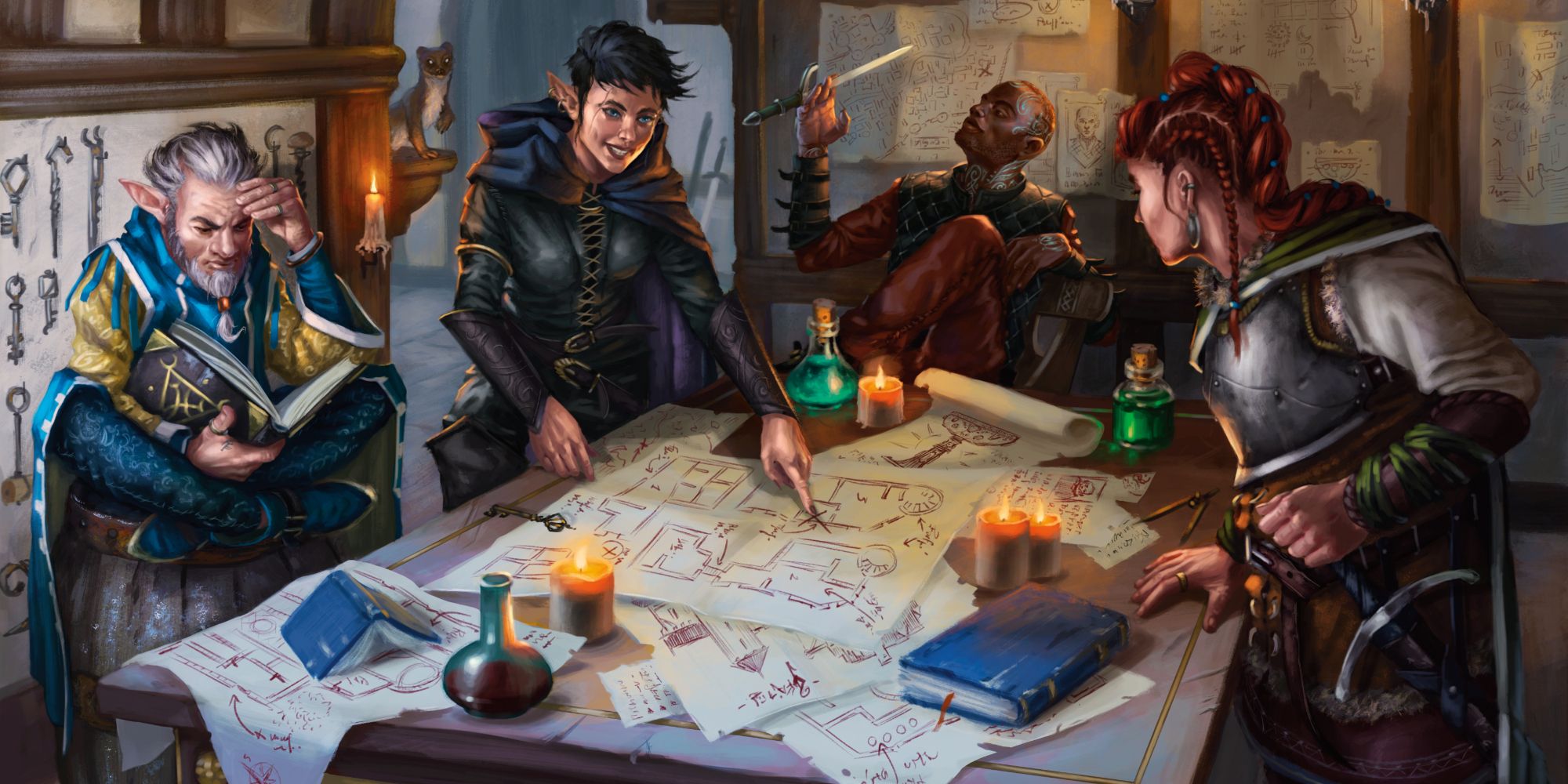
Related
Dungeons & Dragons: How To Build The Perfect Heist Crew
Here’s how to build the perfect heist crew, with classes, subclasses, tool proficiencies, and everything you’ll need to steal the treasure.
A swallowed target takes 3d6 acid damage at the start of each of your turns and remains restrained. There is no way for the swallowed creature to escape your belly besides dealing enough damage to break your giant toad form. While somewhat sickening to think about too literally, the giant toad’s swallow ability is incredibly strong.
12
Draft Horse
Challenge Rating: 1/4
We’ve got critters for outright fighting and others for espionage, but what about more practical beasts for shipping and travel? As one of the more ordinary Exploration options, the Draft Horse gets overlooked, but it’s one of the most useful choices a Druid can make.
A standard draft horse can carry up to 540 pounds or two average-sized companions, and despite the size, a draft horse actually has a high movement speed. It’s quicker than the elephant but not useful in combat.
11
Giant Hyena
Challenge Rating: 1
This is a relatively niche form, but it’s worth including because Druids who can correctly decipher when to use it will be rewarded handsomely. The Giant Hyena appears to be a worse Dire Wolf at first glance, however, it can sometimes outperform the Dire Wolf thanks to its Rampage ability.
This ability says that when the Giant Hyena reduces a creature to 0 hit points, it can move up to half its speed and make another attack as a bonus action. In other words, the Giant Hyena is the best combat form when facing a large number of relatively weak enemies. Did somebody ring the Goblin dinner bell?
10
Dire Wolf
Challenge Rating: 1
While the Giant Toad provides amazing crowd control in Combat situations, the Dire Wolf is a better all-purpose form. It has a much higher AC of 14, skill bonuses in stealth as well as perception, a speed of 50 feet, and an attack that deals less damage but is more reliable due to the wolf’s pack tactics.
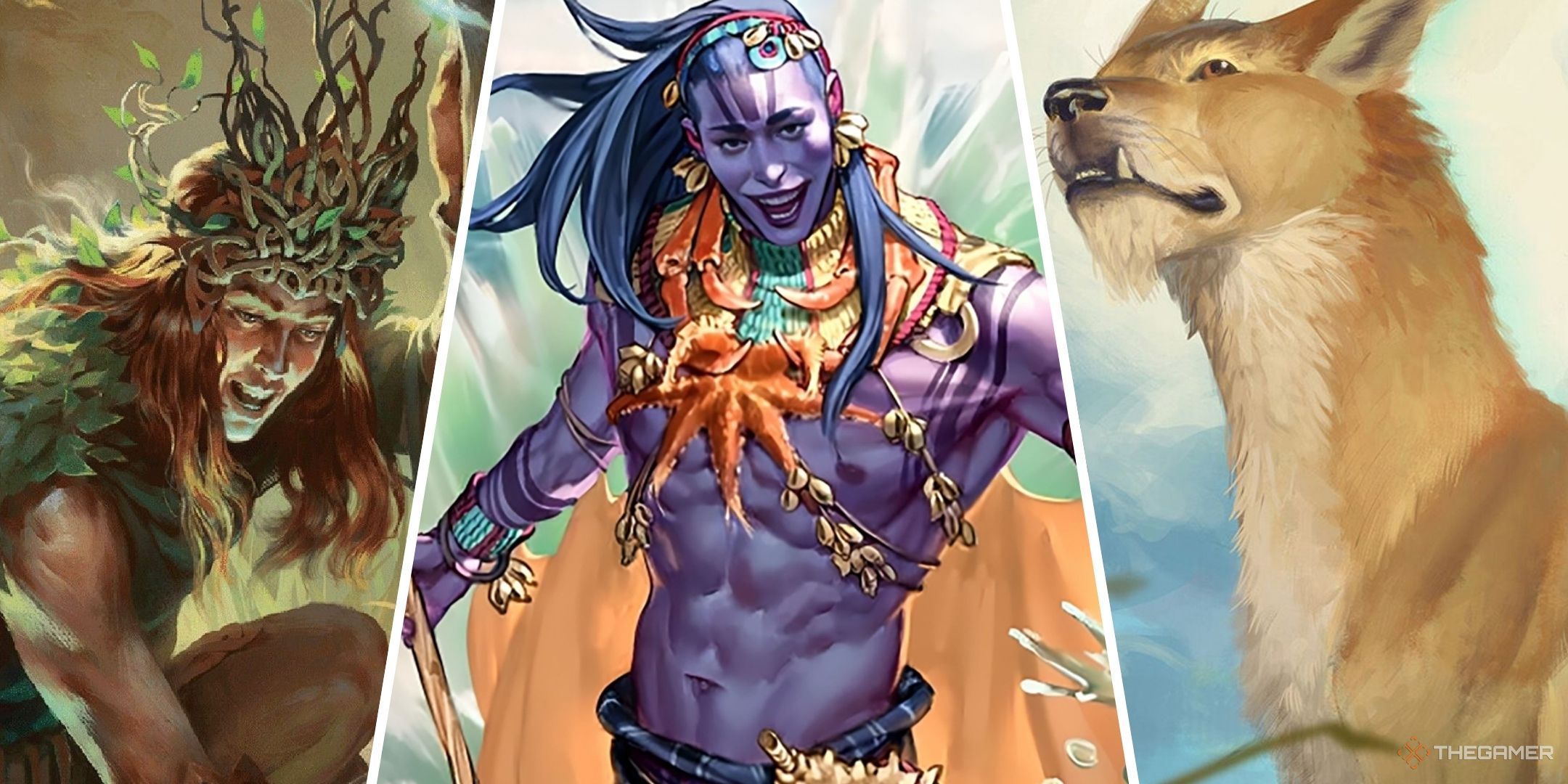
Related
Dungeons & Dragons: 13 Backstory Ideas For A Druid
These backstory ideas could help make your D&D Druid journey a great one.
The wolf’s bite attack also has a chance of knocking the target prone granted they fail a DC 13 strength save. Lastly, the Dire Wolf’s keen hearing and smell give it an advantage on most perception checks. This is your go-to Wild Shape form until level six for Circle of the Moon Druids or level eight for Druids of other subclasses.
9
Giant Vulture
Challenge Rating: 1
As a Combat form, the giant vulture is much more fragile than the dire wolf and giant toad forms, but it makes up for this with its flying speed of 60 feet, pack tactics, and multi-attack. When fighting opponents relying on melee, the vulture can swoop in and out of combat though it will provoke opportunity attacks.
The giant vulture’s biggest downfall is its low AC of 10. However, you can negate this drawback by casting Barkskin on yourself before Wild Shaping. According to the game’s designers, Barkskin still applies to your Wild Shape forms.
8
Giant Constrictor Snake
Challenge Rating: 2
This is a CR two Combat beast. As a result, the form is only available to Circle of the Moon Druids of at least sixth level. Druids of other subclasses will never gain access to this form, and subsequently, any other form in this list. These are the forms that put the power of the Circle of the Moon’s Wild Shape on full display.
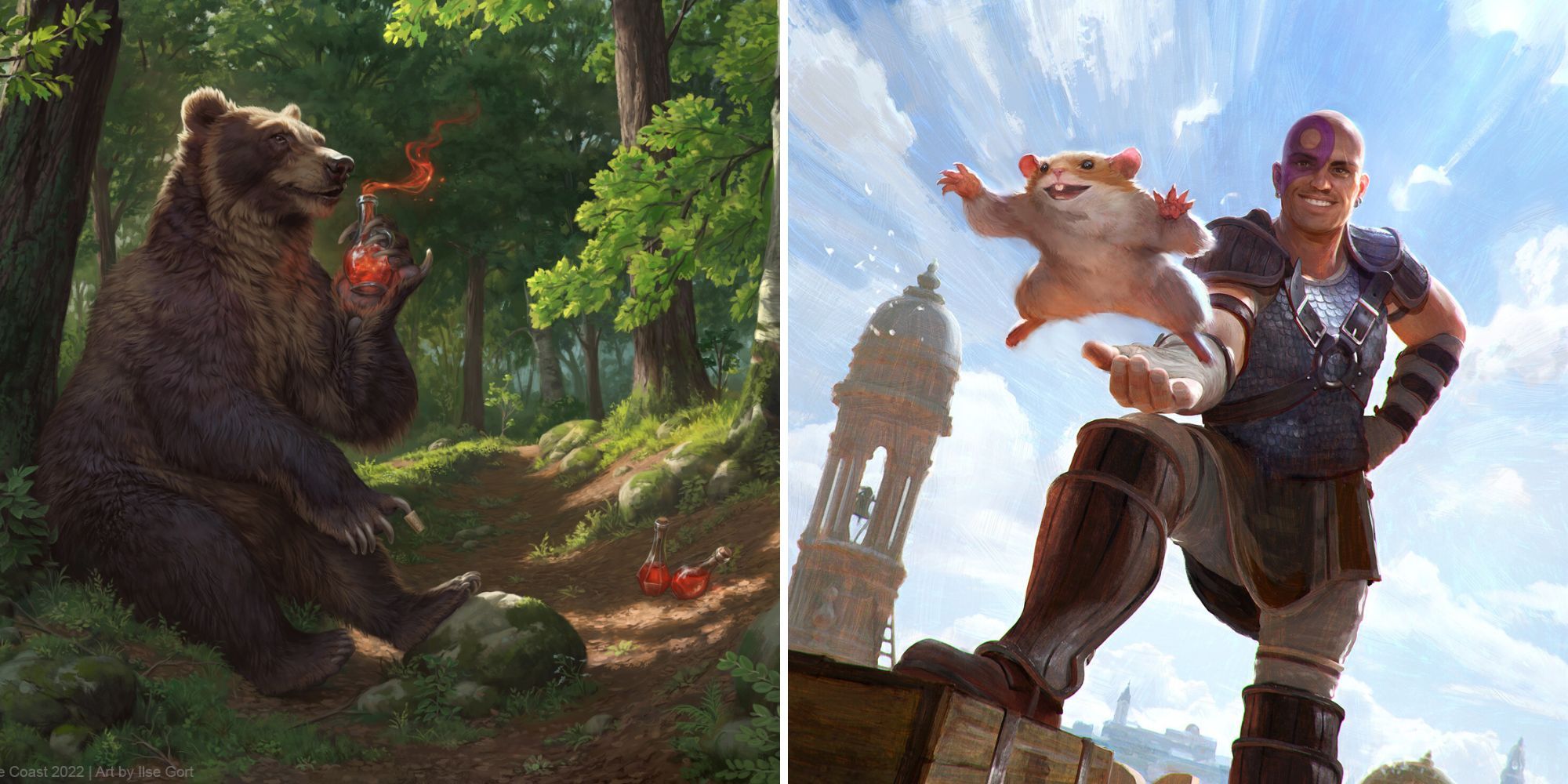
Related
Dungeons & Dragons: The 12 Best Druid Cantrips, Ranked
Is your druid harnessing the full potential of nature’s cantrips in your Dungeons & Dragons game?
The giant constrictor snake is one of your best combat forms until level nine. An upgraded version of the giant toad, your constrict attack automatically grapples and restrains a target with a nasty escape DC of 16. Your hit points also increase to 60, and you gain a swim speed.
7
Saber-Toothed Tiger
Challenge Rating: 2
Another great form for these levels is the saber-toothed tiger. Like the velociraptor, you’ll likely need DM approval to take this form. Thankfully, most DMs will be much more open to a prehistoric mammal than a straight-up dinosaur.
This form’s power comes from its high stealth modifier and Pounce ability. You can sneak up on opposing creatures easily enough with the tiger form before moving toward them and landing a claw attack, forcing them to make a DC 14 Strength saving throw. On a failure, the target is knocked prone and you get to make a bite attack as a bonus action at advantage thanks to prone.
6
Giant Scorpion
Challenge Rating: 3
At level nine, you can now transform into CR three beasts. The strongest Combat form among them is the giant scorpion. Not only is it capable of grappling two creatures with each of its claws, but the scorpion also has a nasty stinger attack that deals 4d10 poison damage if your target fails a DC 12 Constitution saving throw.
That’s a total of three attacks each turn. And, while poison might not be the most reliable type of damage, it’s still a powerful tool. Furthermore, the scorpion has blindsight. This feature prevents you from being blinded and allows you to see invisible targets, enemies obscured by darkness, and so forth. Altogether, the giant scorpion doesn’t leave much to be desired.
5
Killer Whale
Challenge Rating: 3
This particular Wild Shape is handy in combat, but situational because it can only be used underwater. However, the Killer Whale has a wicked blindsight ability with a range of 120 feet, along with a bonus to Wisdom and Perception checks which rely on its enhanced hearing ability.
Maybe you and your party are headed out to sea anyway, or playing with the Nautical Adventures supplement, so this shape could be utilized for transportation or exploration along with Combat.
4
Fire Elemental
Challenge Rating: 5
The fire elemental’s form makes it so that you can run across the battlefield with your 50-foot speed and set all your enemies ablaze along the way. Victims take 1d10 fire damage and are set on fire. At the beginning of each of their turns, they will take an additional 1d10 fire damage. This continues until the creature uses an action to douse the flames.
It’s a lose-lose situation for the opponent, as they must choose between taking fire damage for the rest of the combat or losing an action to douse the flames. Even if they do extinguish the fire, assuming you’re still in fire elemental form, you can ignite them again. While it’s a bit of a gambit to use all your Wild Shapes in one combat, you won’t be disappointed with the results.
3
Giant Crocodile
Challenge Rating: 5
If you’re taking on a single target, there’s no better form than the crocodile. Once you land an attack with the crocodile’s bite, your target is automatically grappled. They don’t even get a chance to save against the effect.
Furthermore, while grappled in this manner, the target is restrained, granting you and your allies advantages on your attacks. The only way for your target to escape this grapple is by spending one action to make a strength check, and all of this for simply landing a hit. The crocodile also has a swim speed of 30 feet. Depending on the battlefield, a good swim speed can make a huge difference.
2
Water Elemental
Challenge Rating: 5
Circle of the Moon Druids don’t unlock the mammoth form until level 18, so you may be surprised to learn that they have even better options available as early as level ten. The Elemental Wild Shape trait Druids unlock at ten allows them to expend both of their uses of Wild Shape to take on the form of an Air, Earth, Water, or Fire Elemental. These Elementals have resistance to bludgeoning, slashing, and piercing damage, effectively doubling their over 100 hit point pools against most enemies.
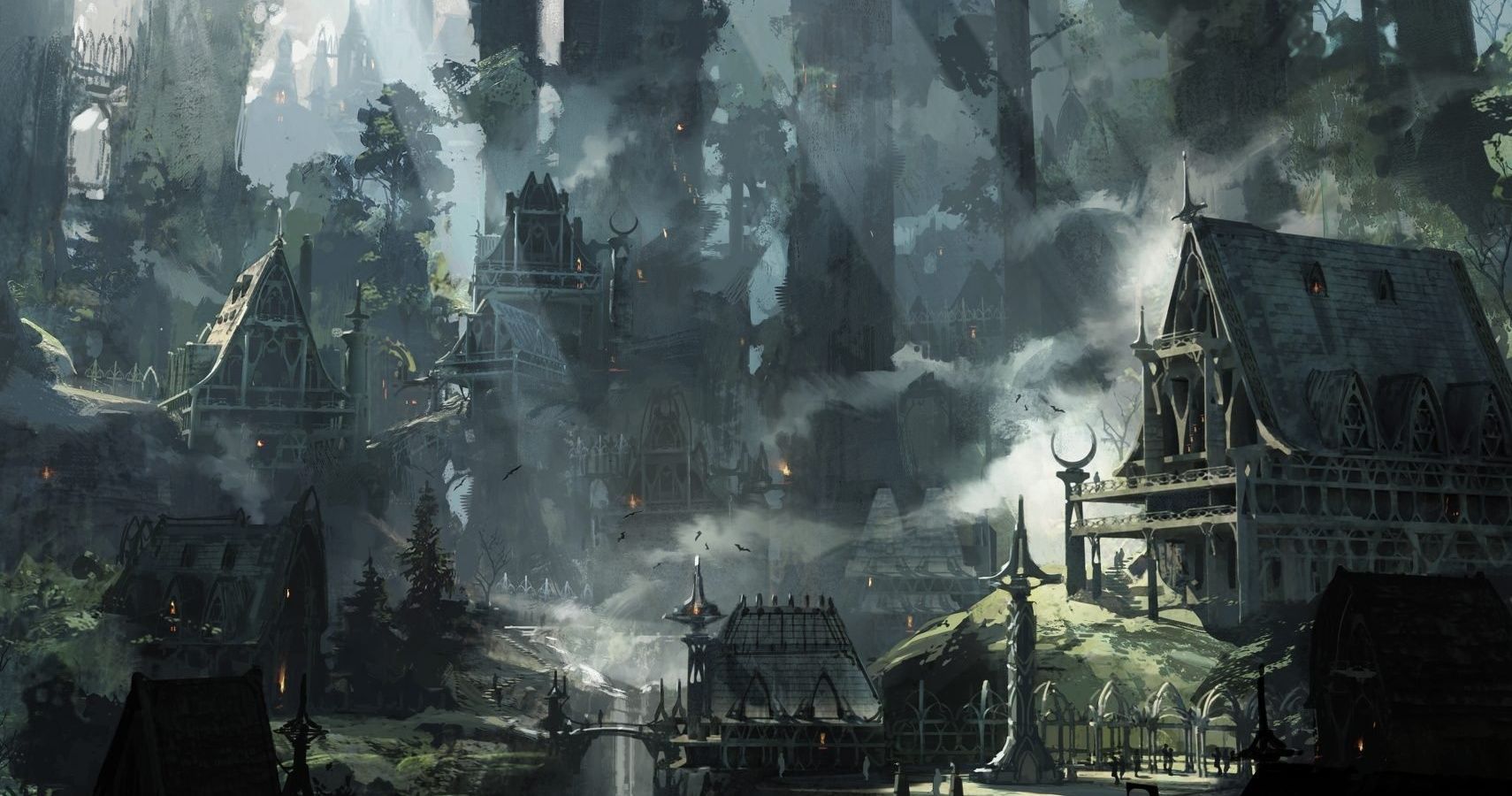
Related
Dungeons And Dragons: 10 Ways To Quicken DM Prep
Are you trying to master being a Dungeon Master? Follow these tips to make preparing your next campaign a little bit quicker and easier!
Water Elementals are also immune to all conditions besides Frightened. The water elemental specifically has the Whelm ability, which grapples creatures in the elemental’s space on a failed DC 15 Strength saving throw. As long as they remain grappled, the creatures take 2d8 + 4 bludgeoning at the start of your turn.
1
Mammoth
Challenge Rating: 6
That being said, there are always bigger and better options. Sadly, CR 4 forms don’t offer anything better than the giant scorpion from an attacking perspective. CR 5 forms have the giant crocodile, which you’ll use at level 15 as an upgraded version of the giant constrictor snake.
Finally, at level 18, you’ll unlock CR 6 forms. At this point, the mammoth becomes your best Wild Shape option. It has 126 hit points, a +7 strength modifier, and multi-attack on two powerful strikes (granted you move at least 20 feet and your target fails a DC 18 Strength saving throw). As with the velociraptor, it may be best to double-check with your DM before you take on this form.
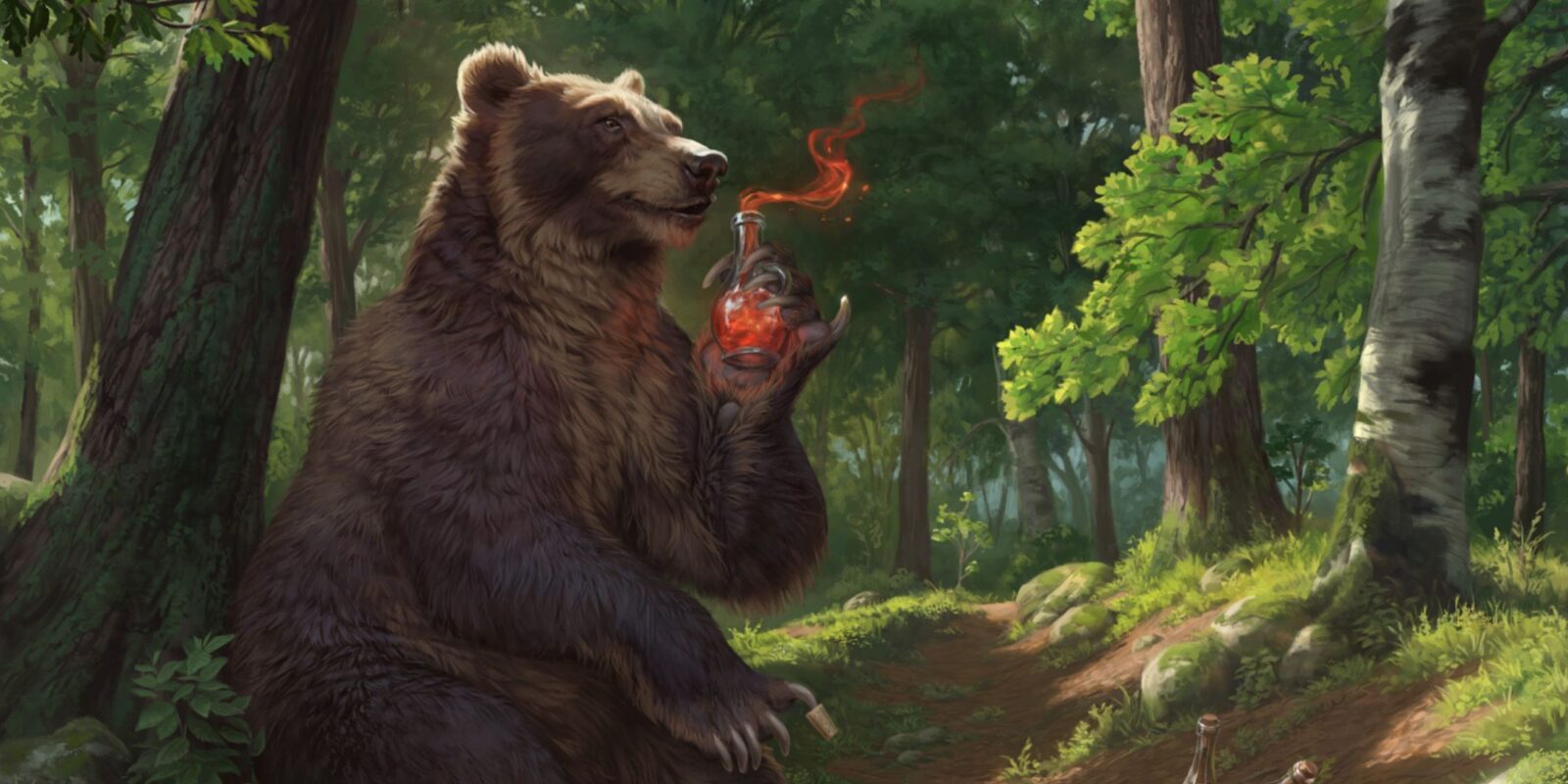
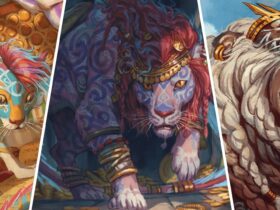
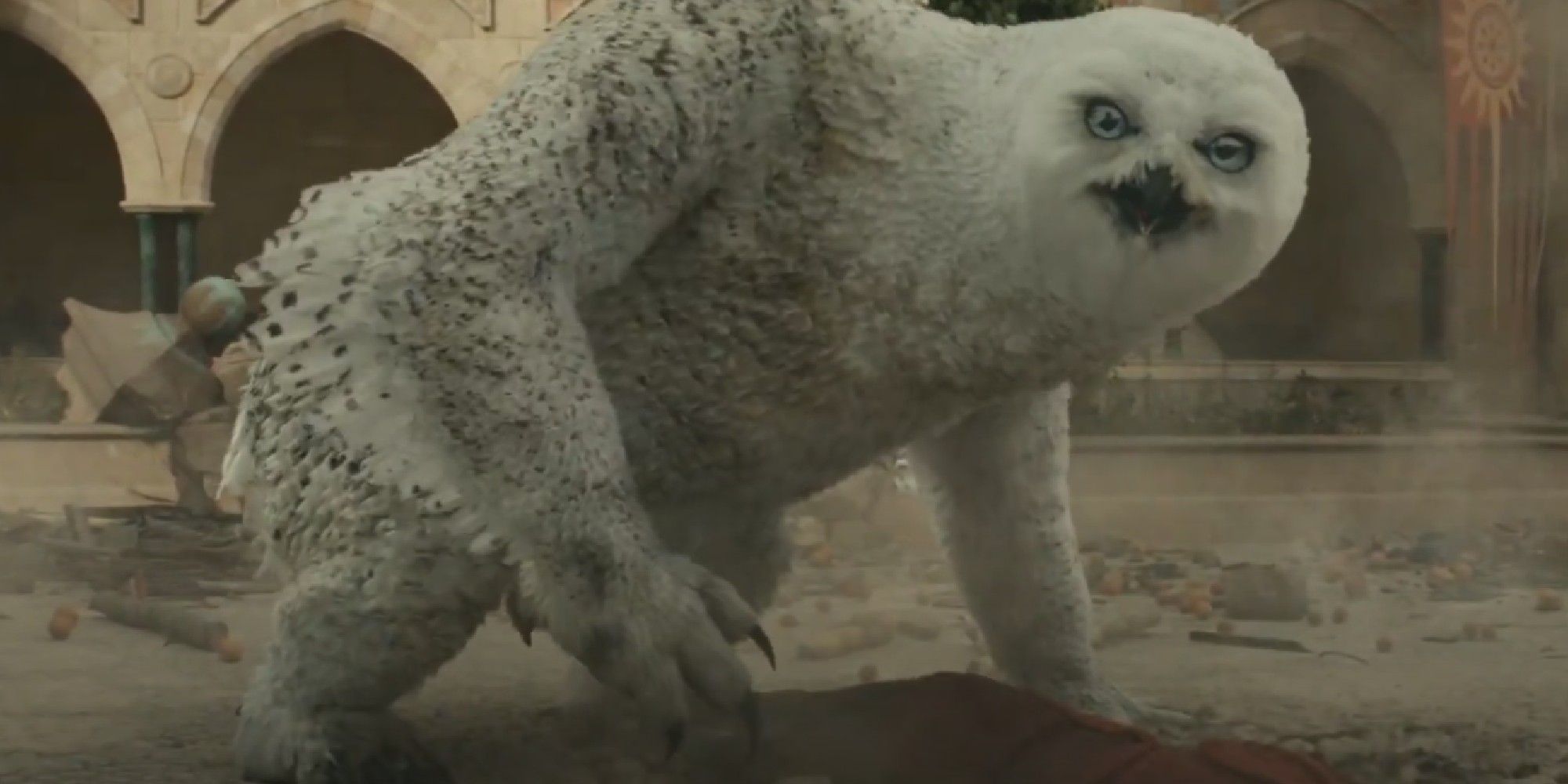
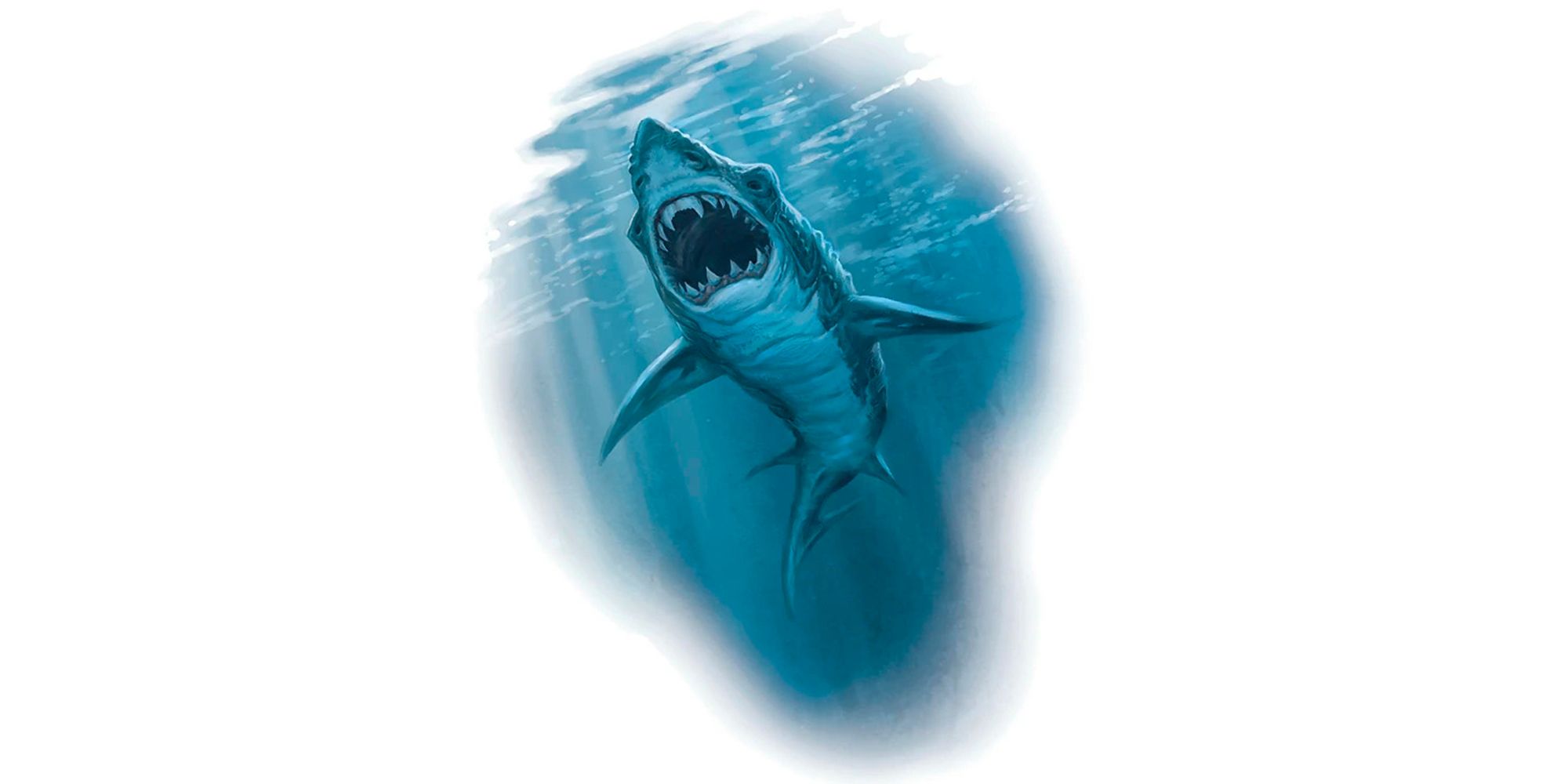
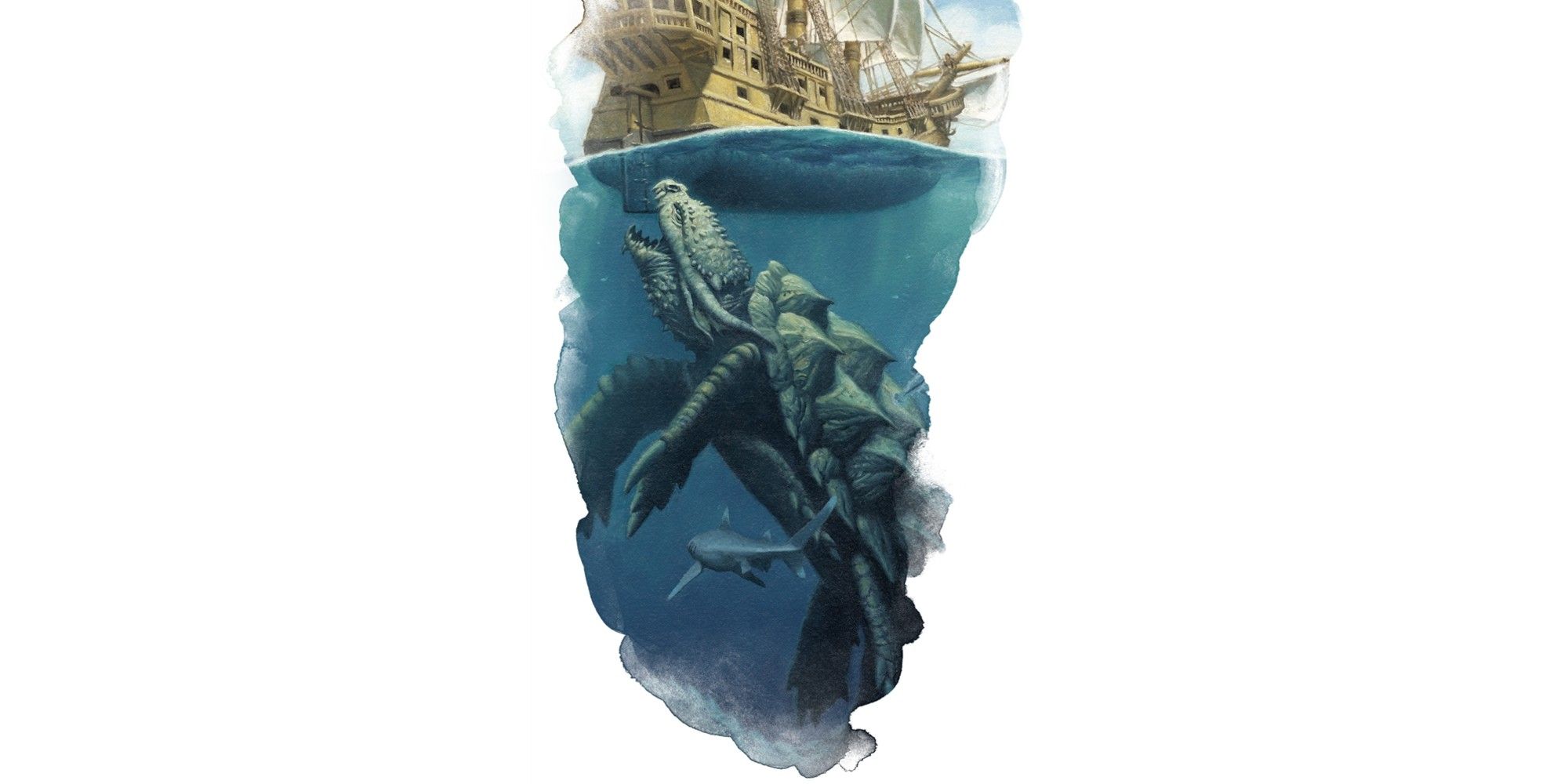
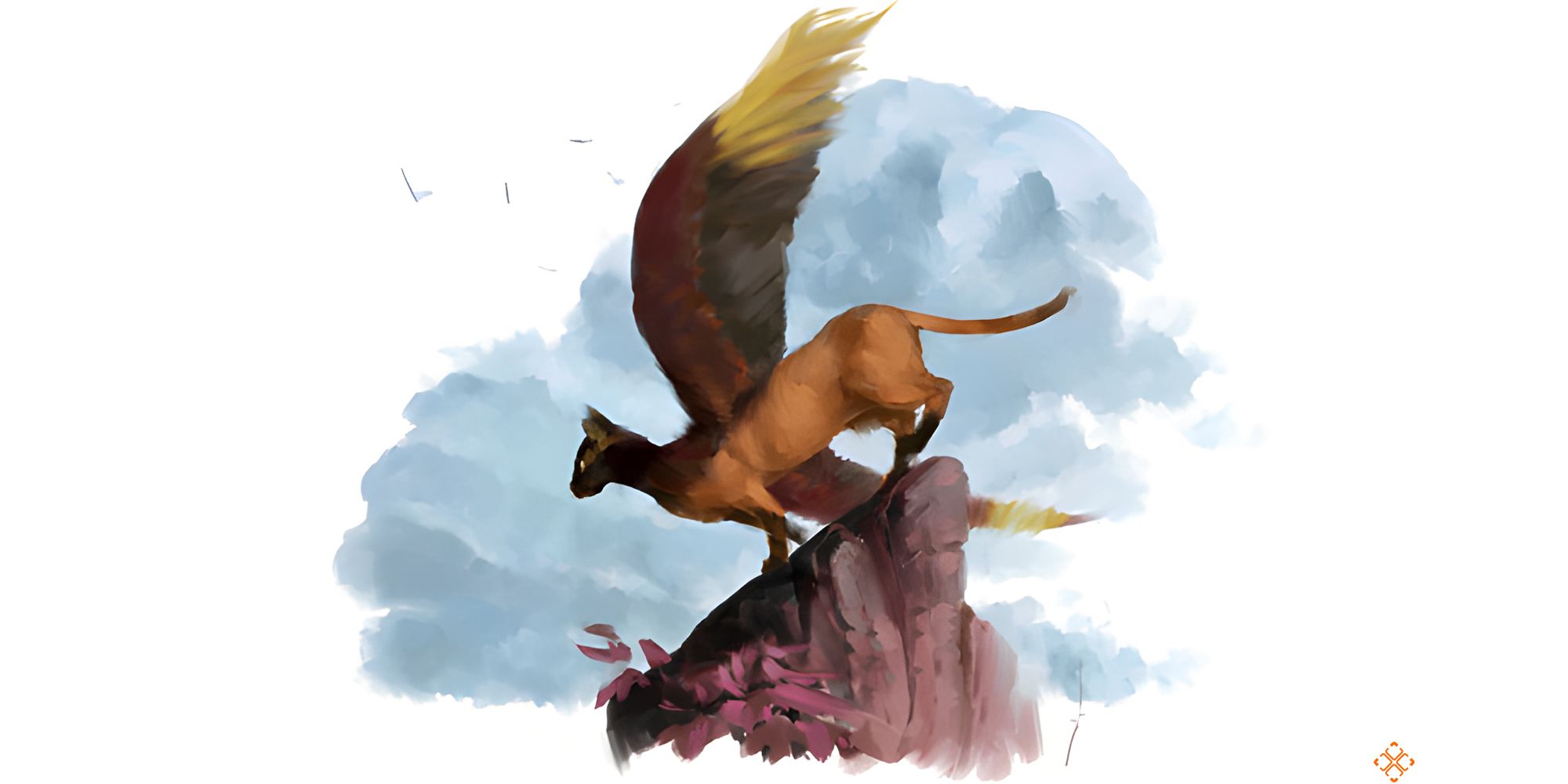
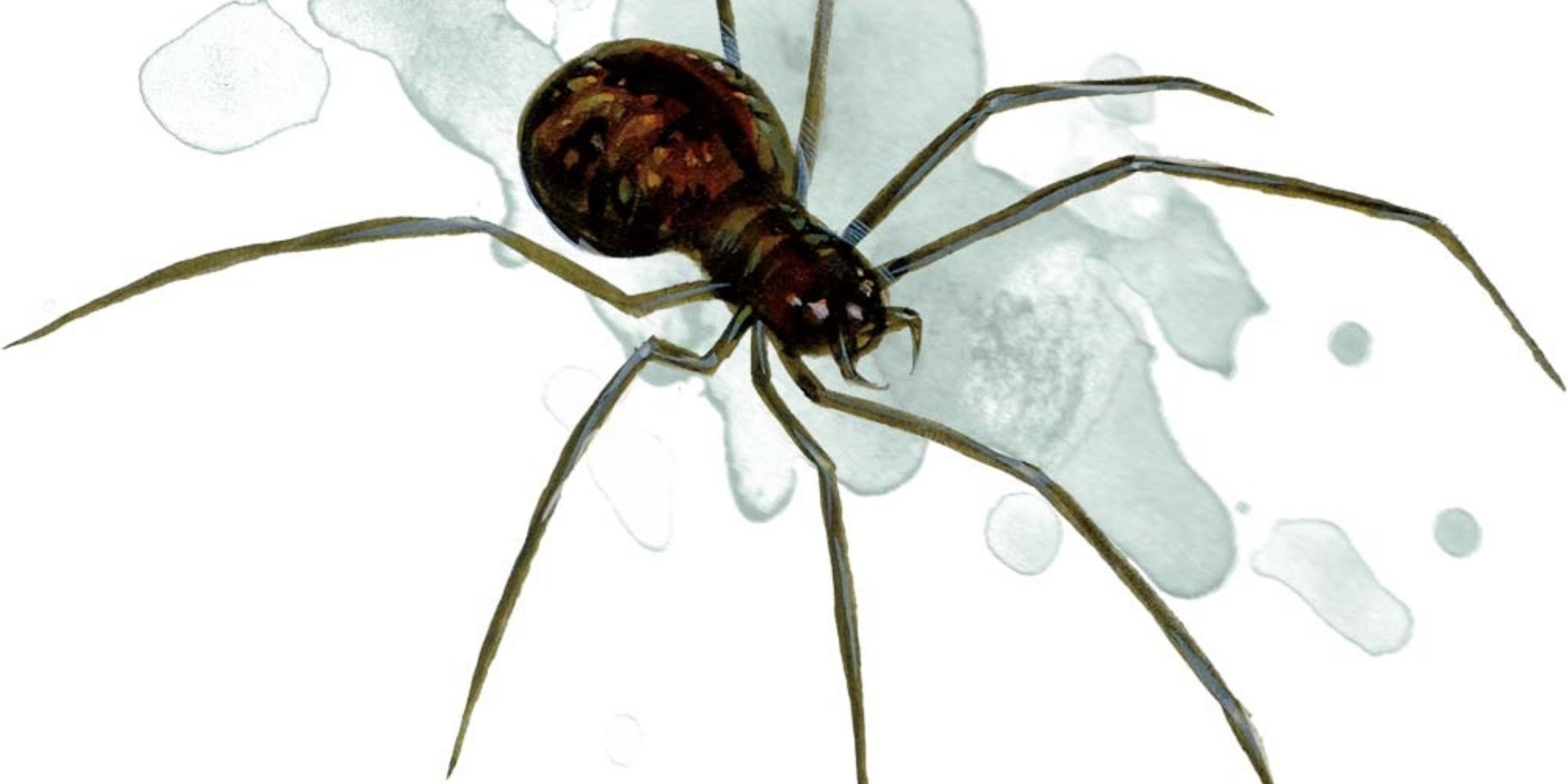
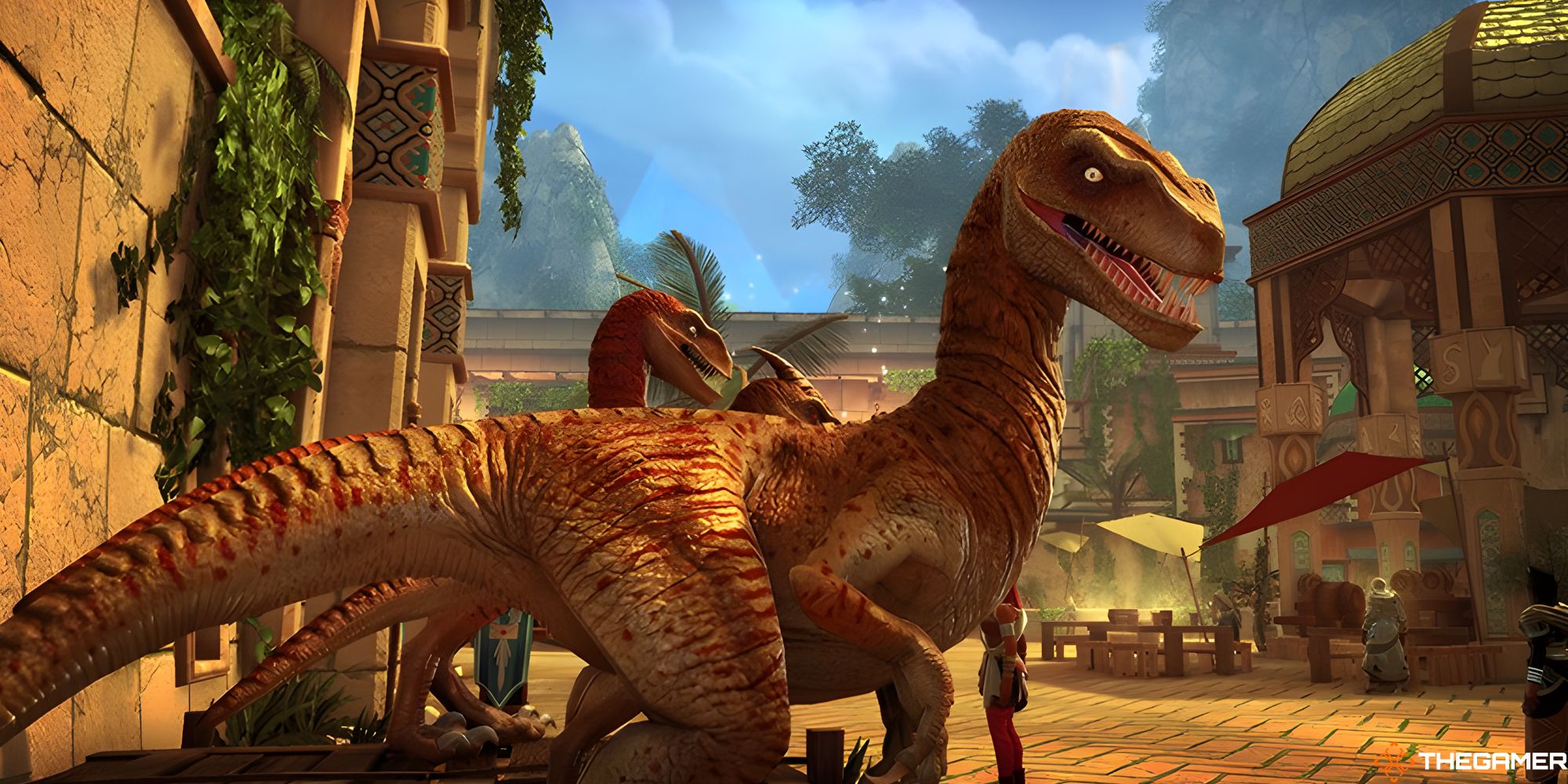
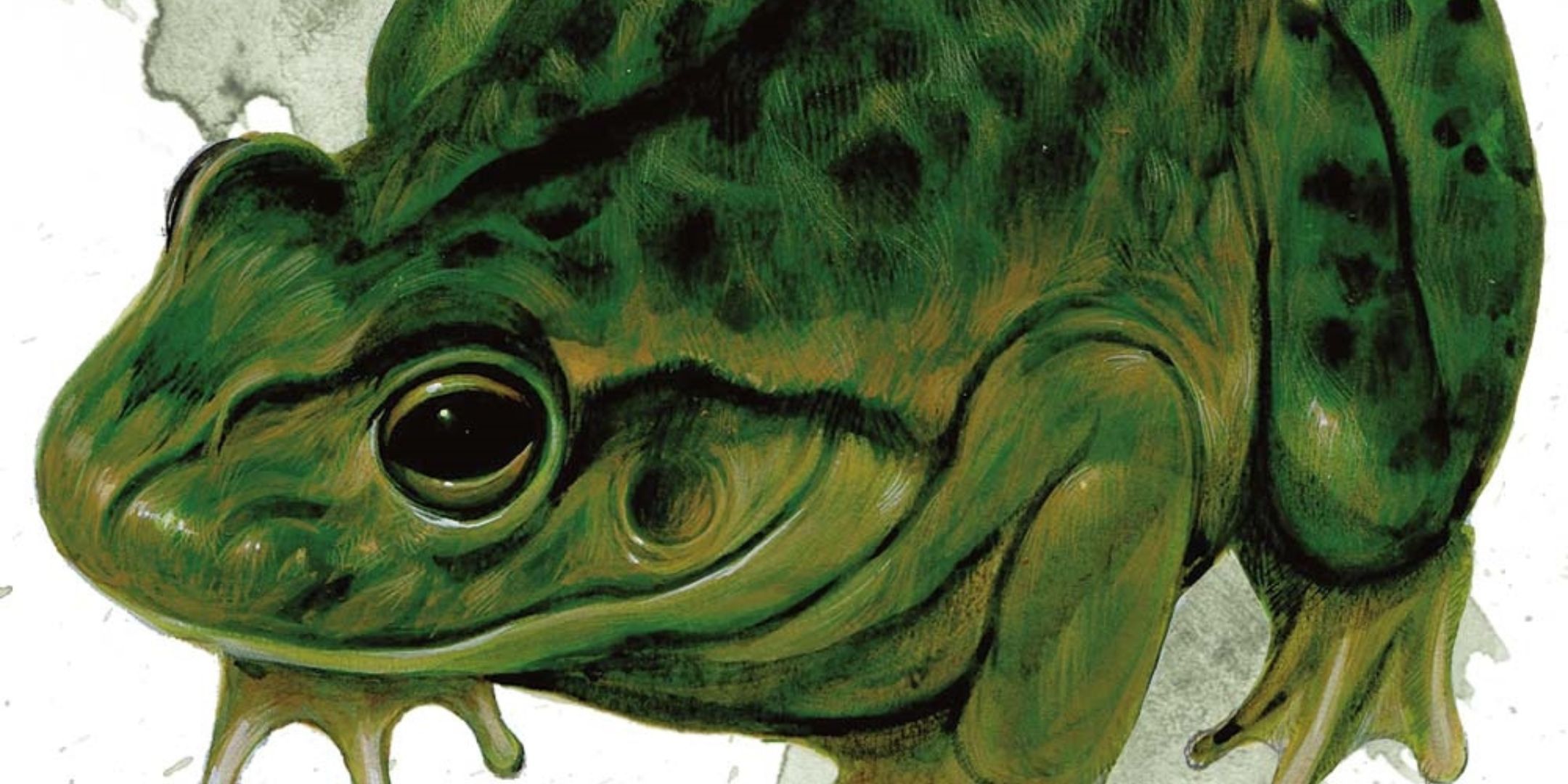
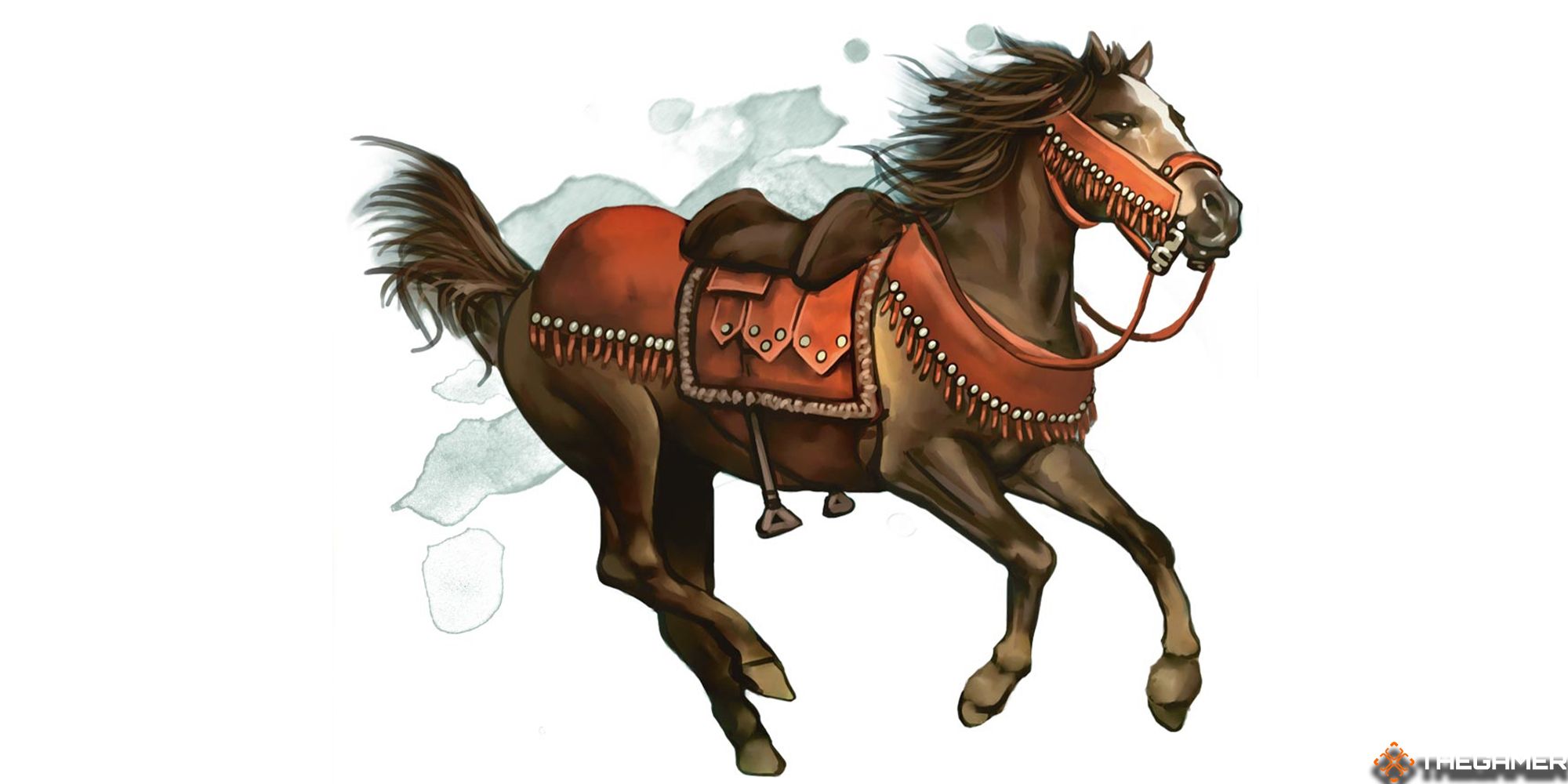
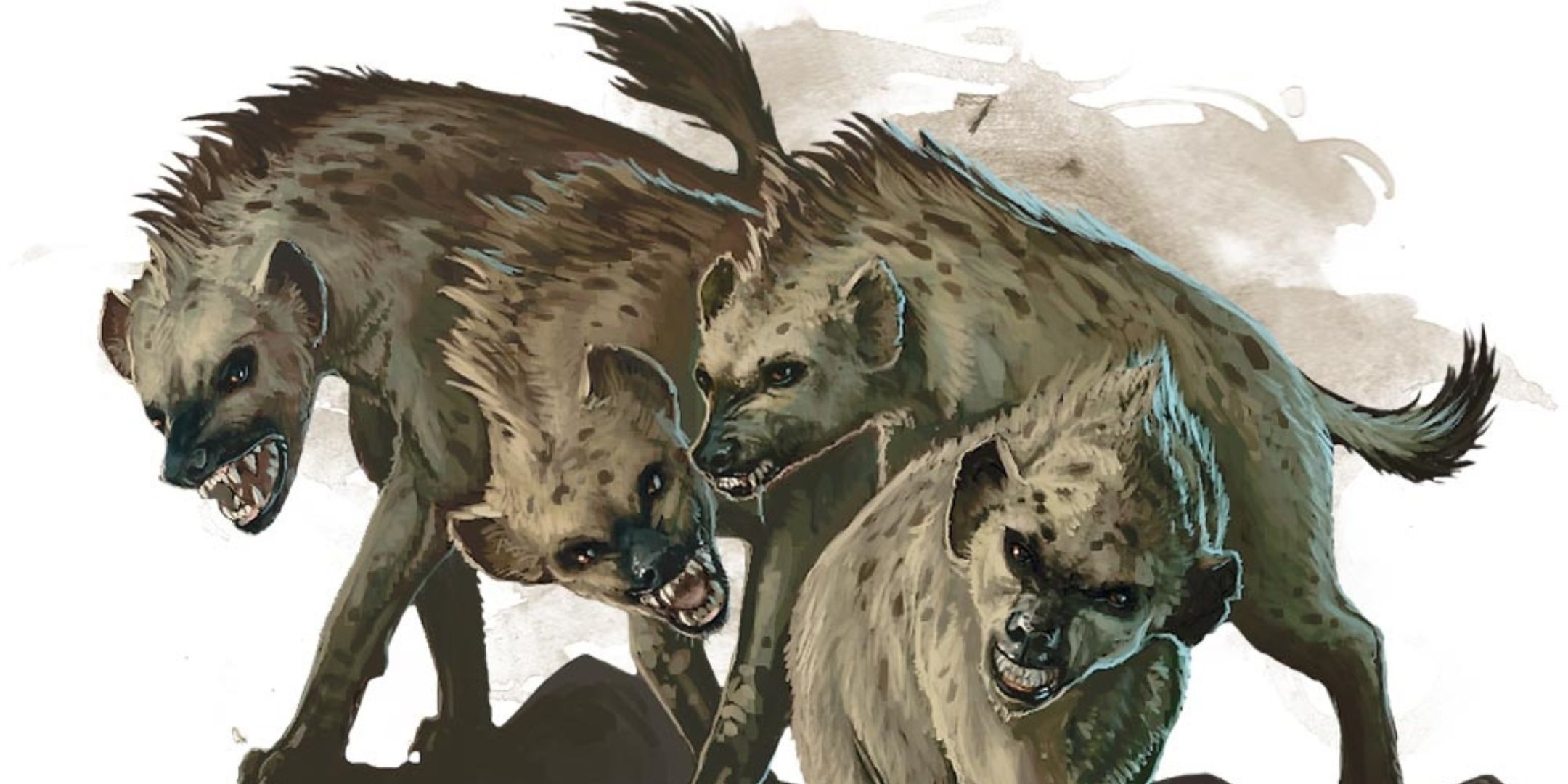
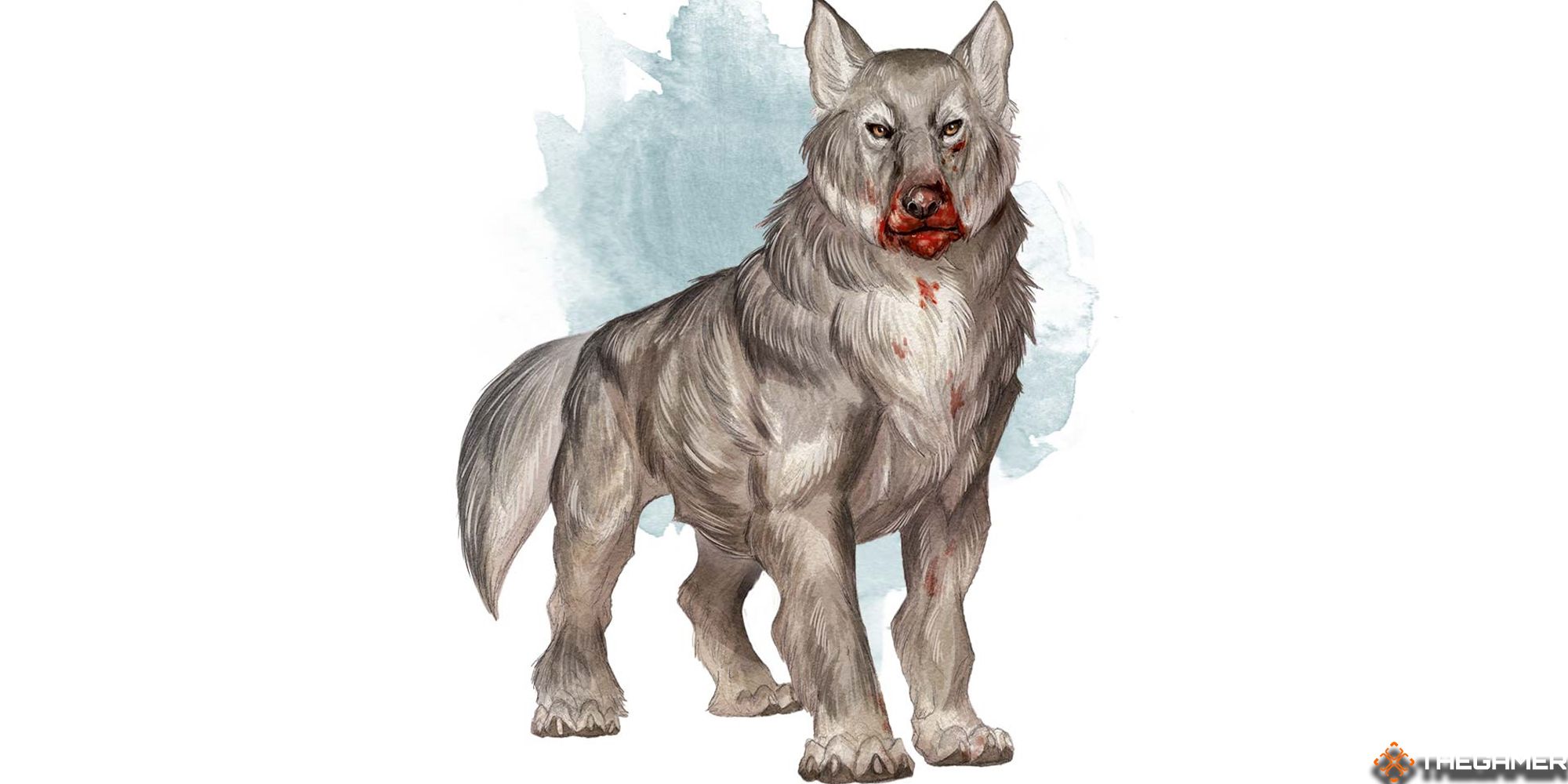
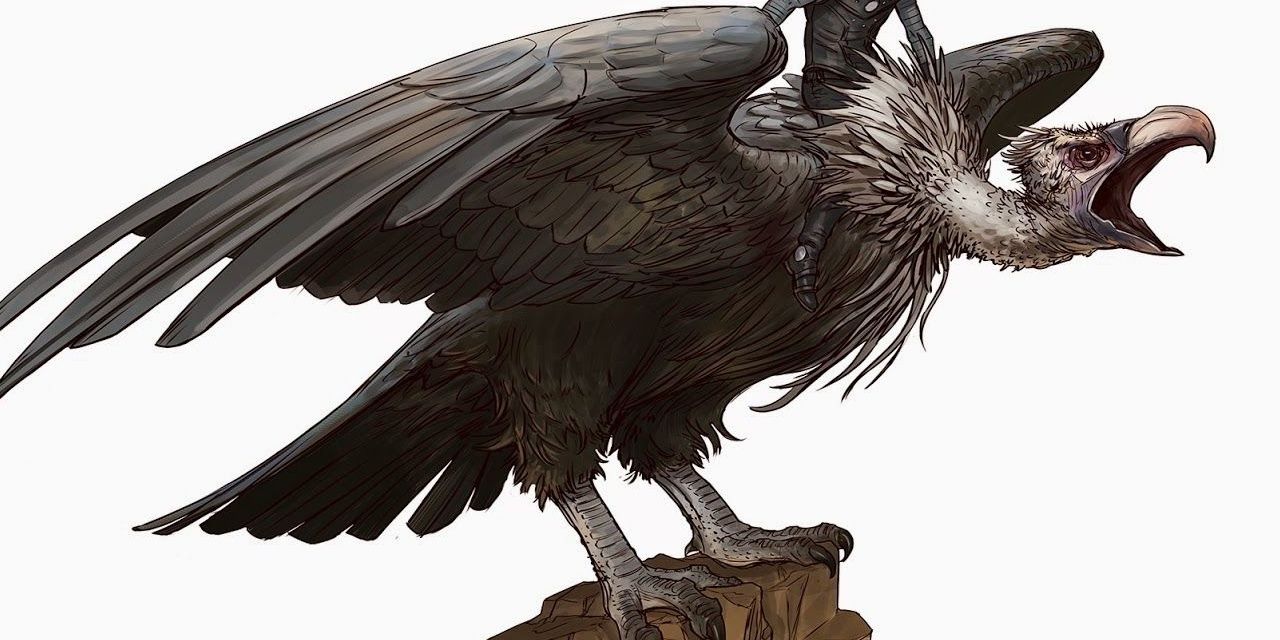
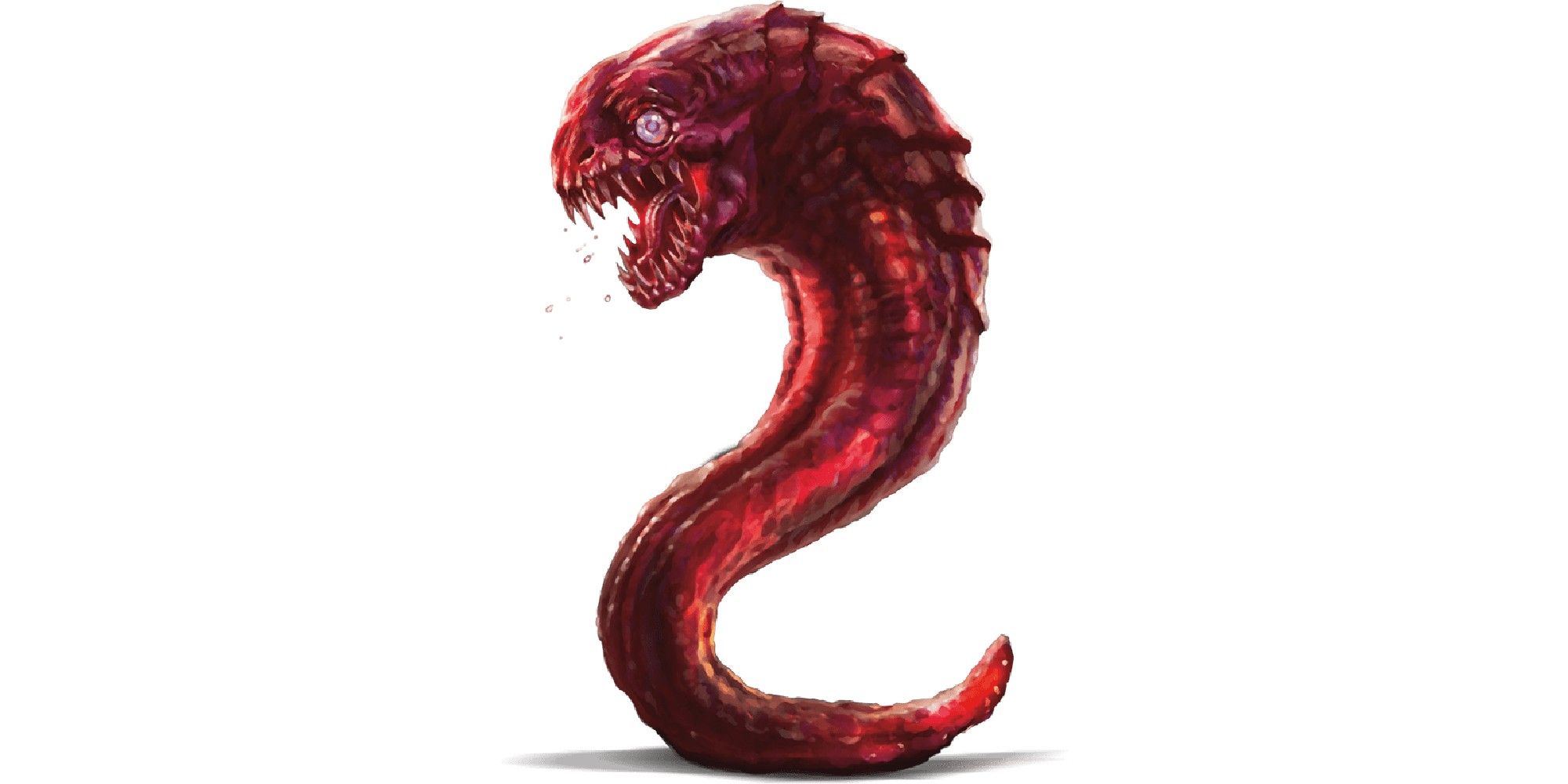
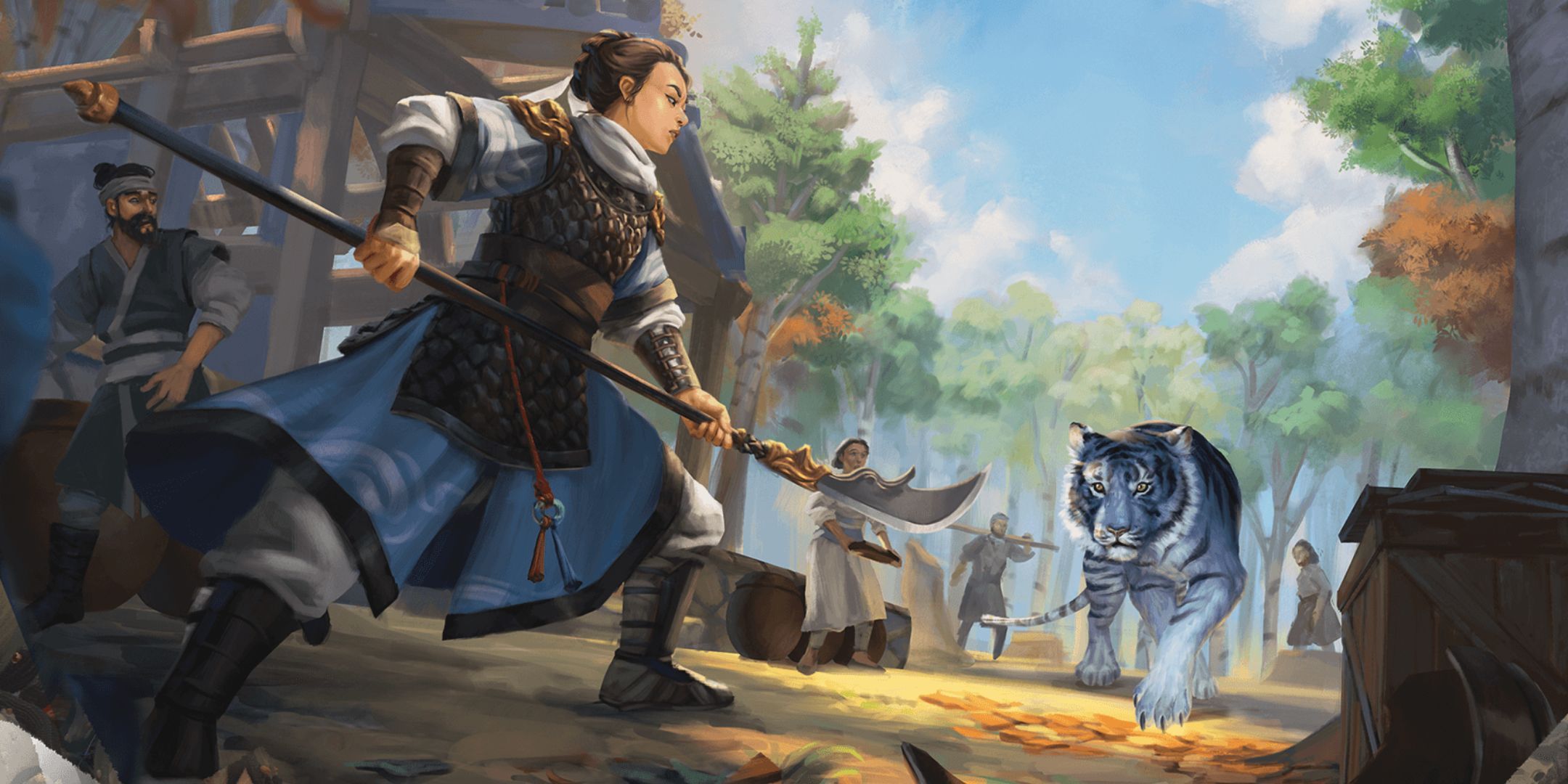
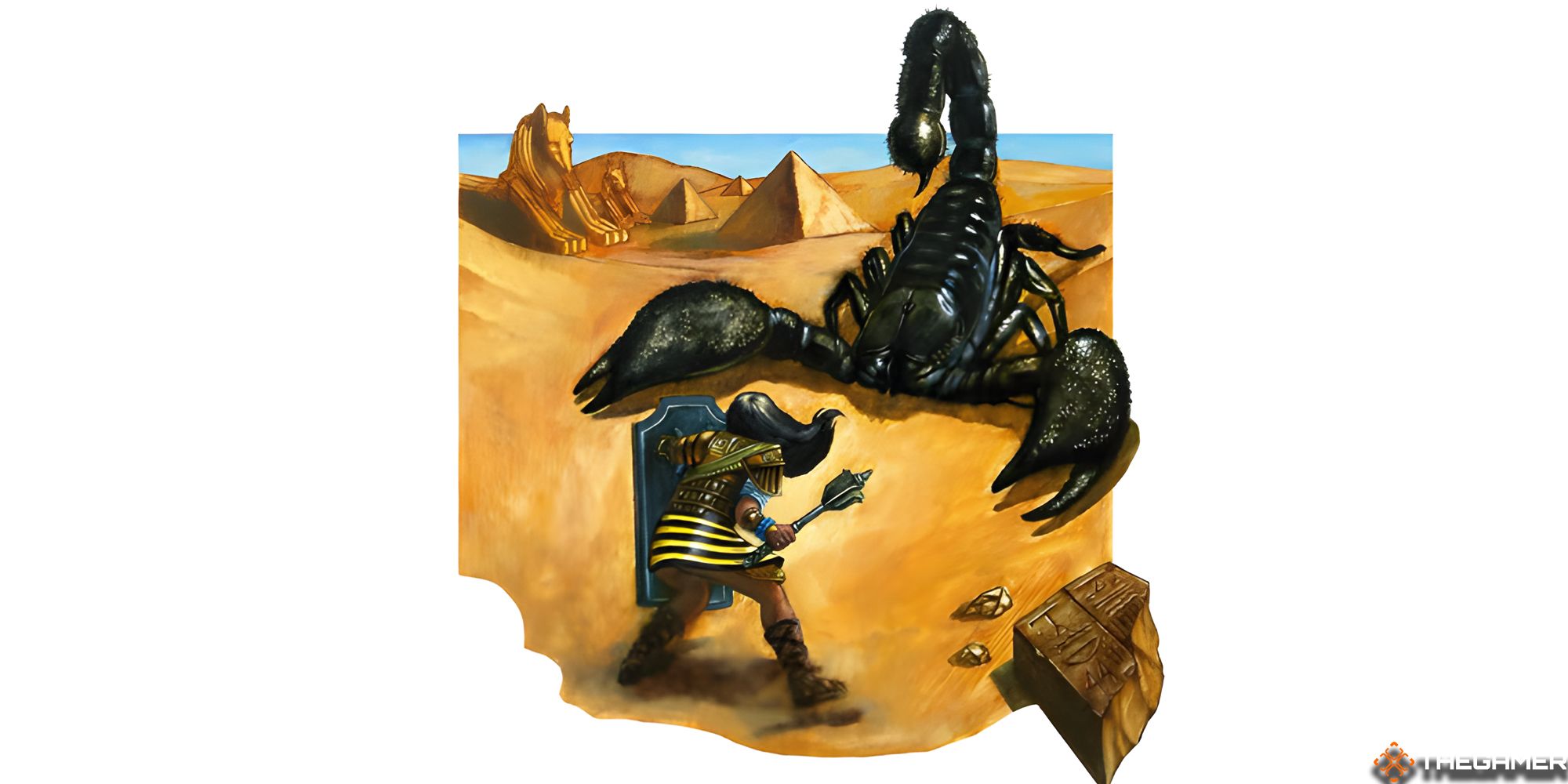
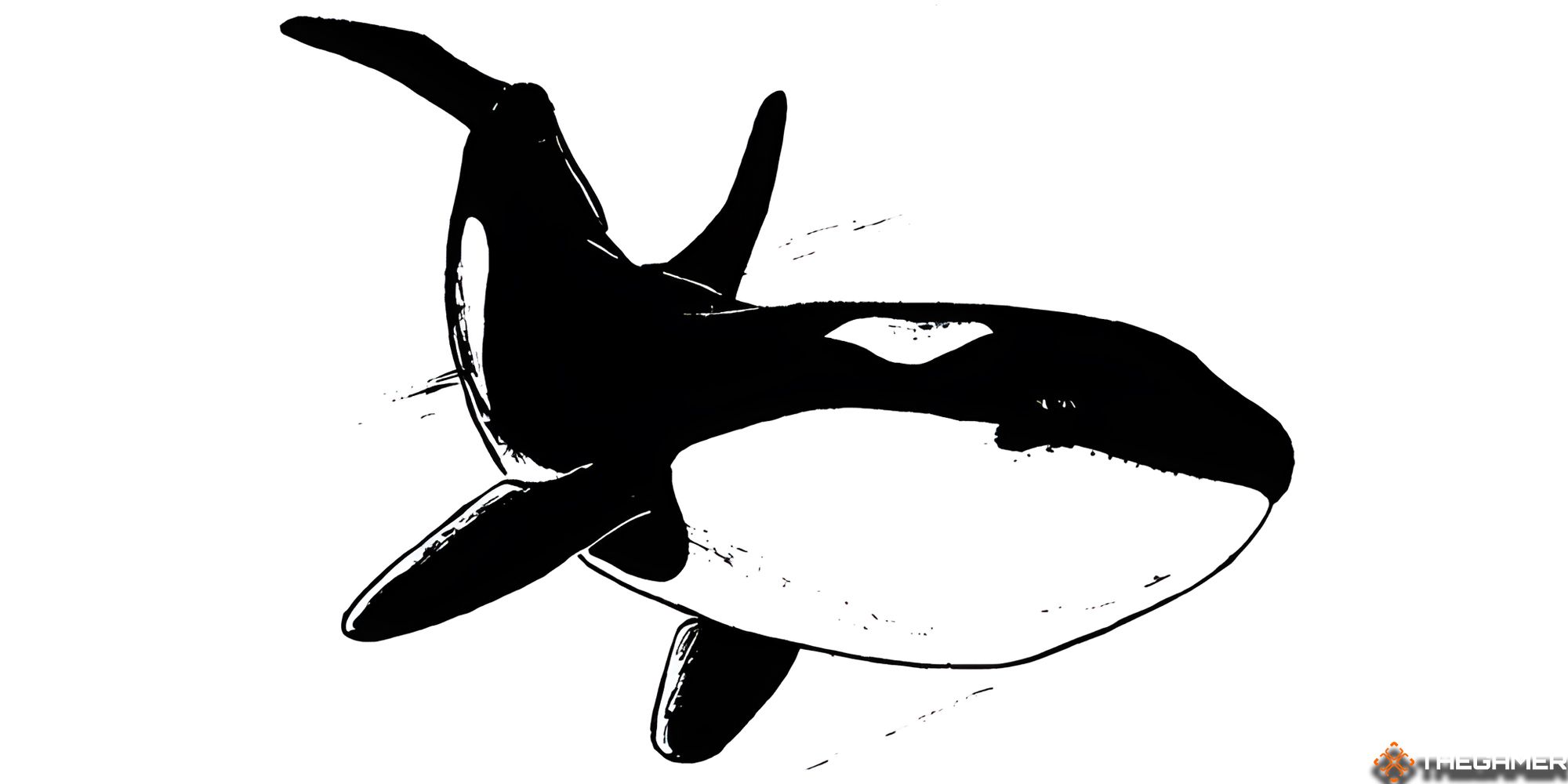
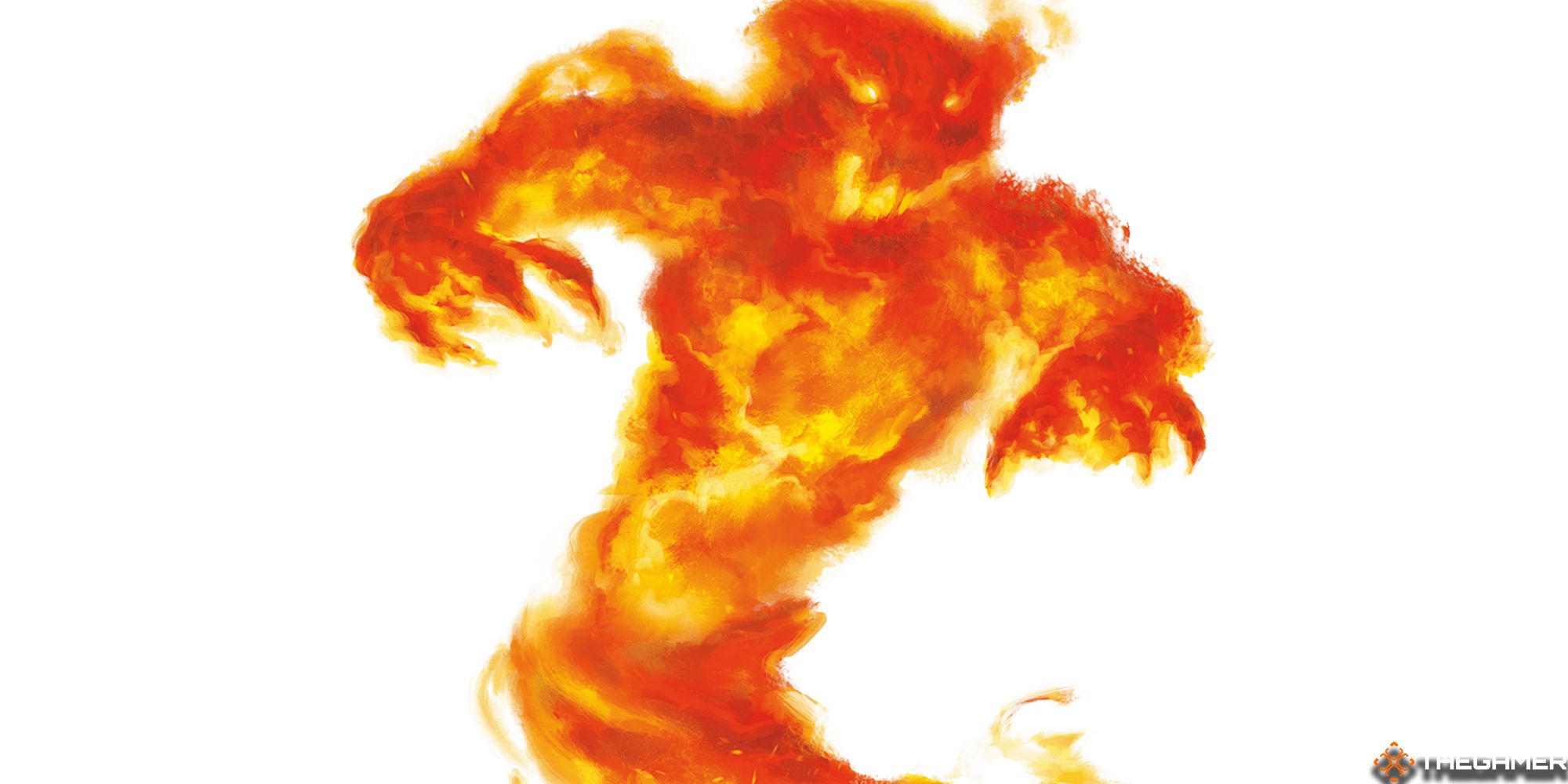
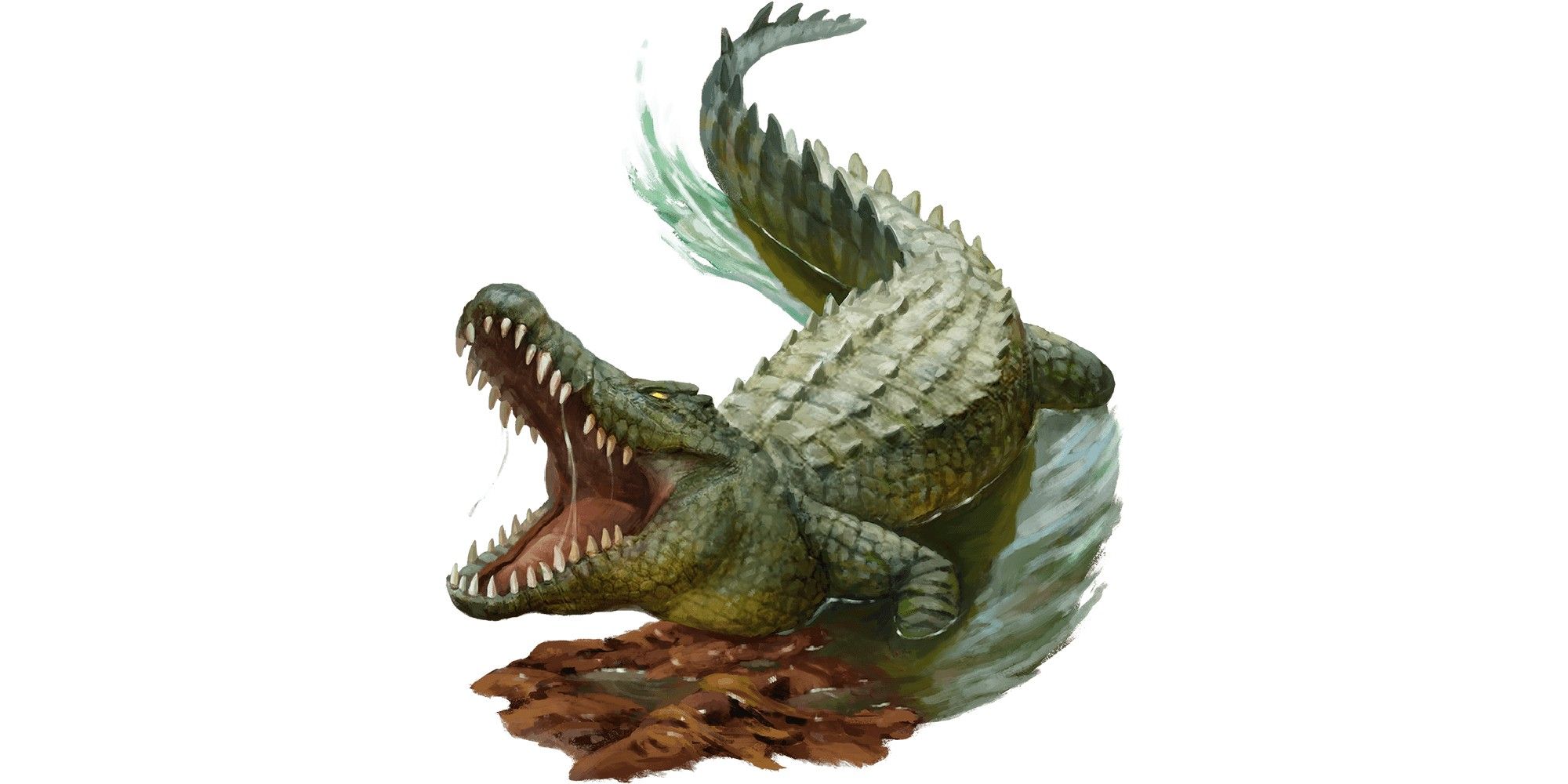
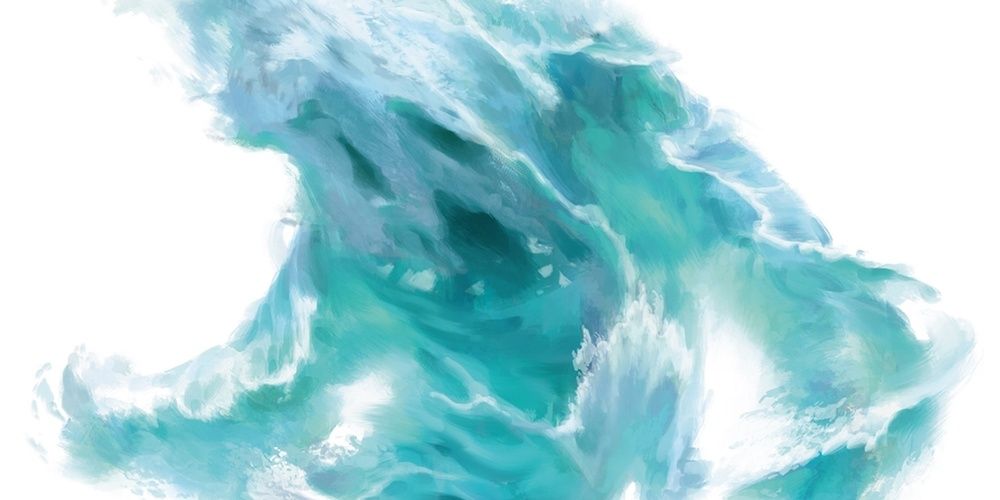
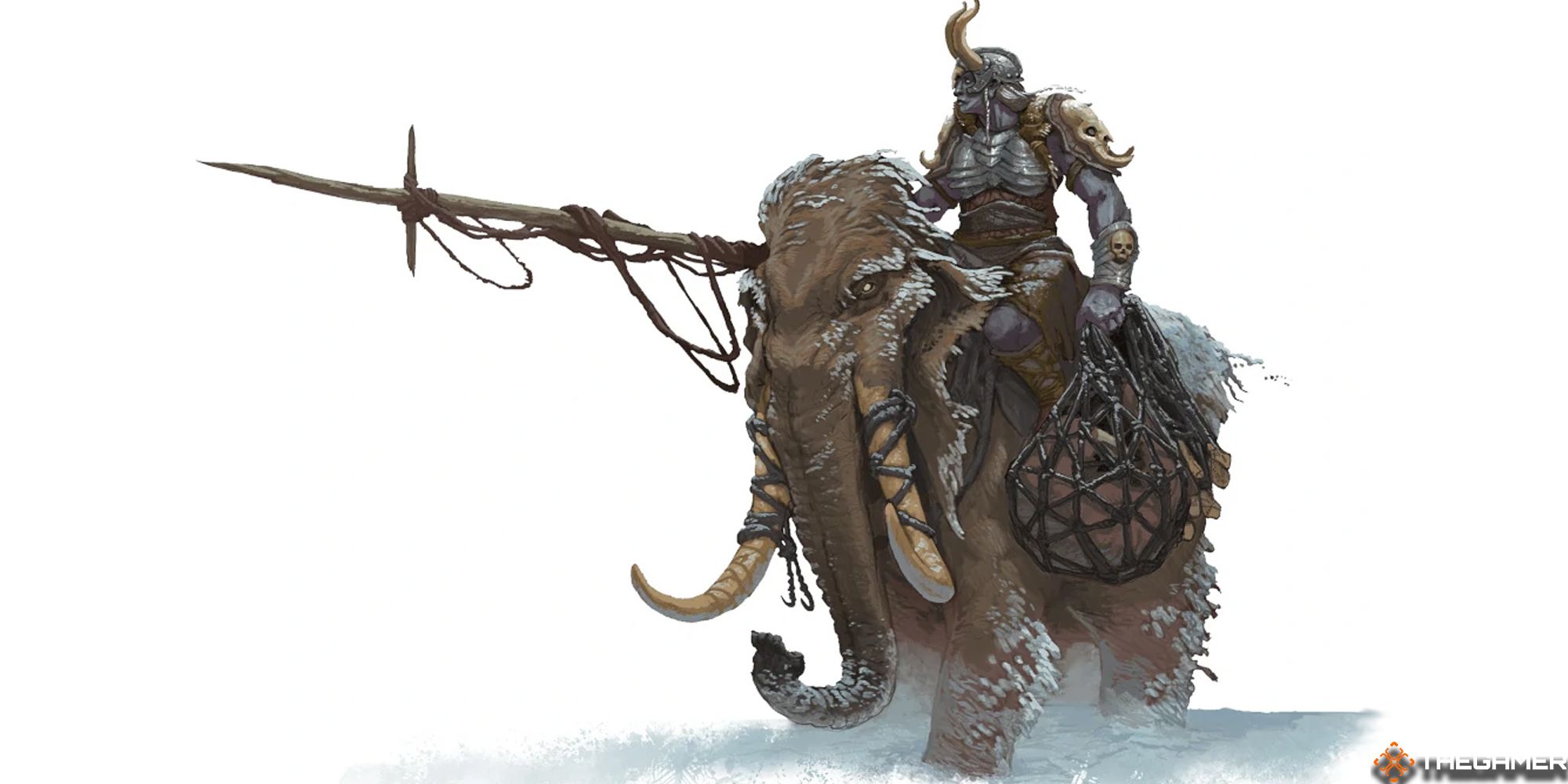
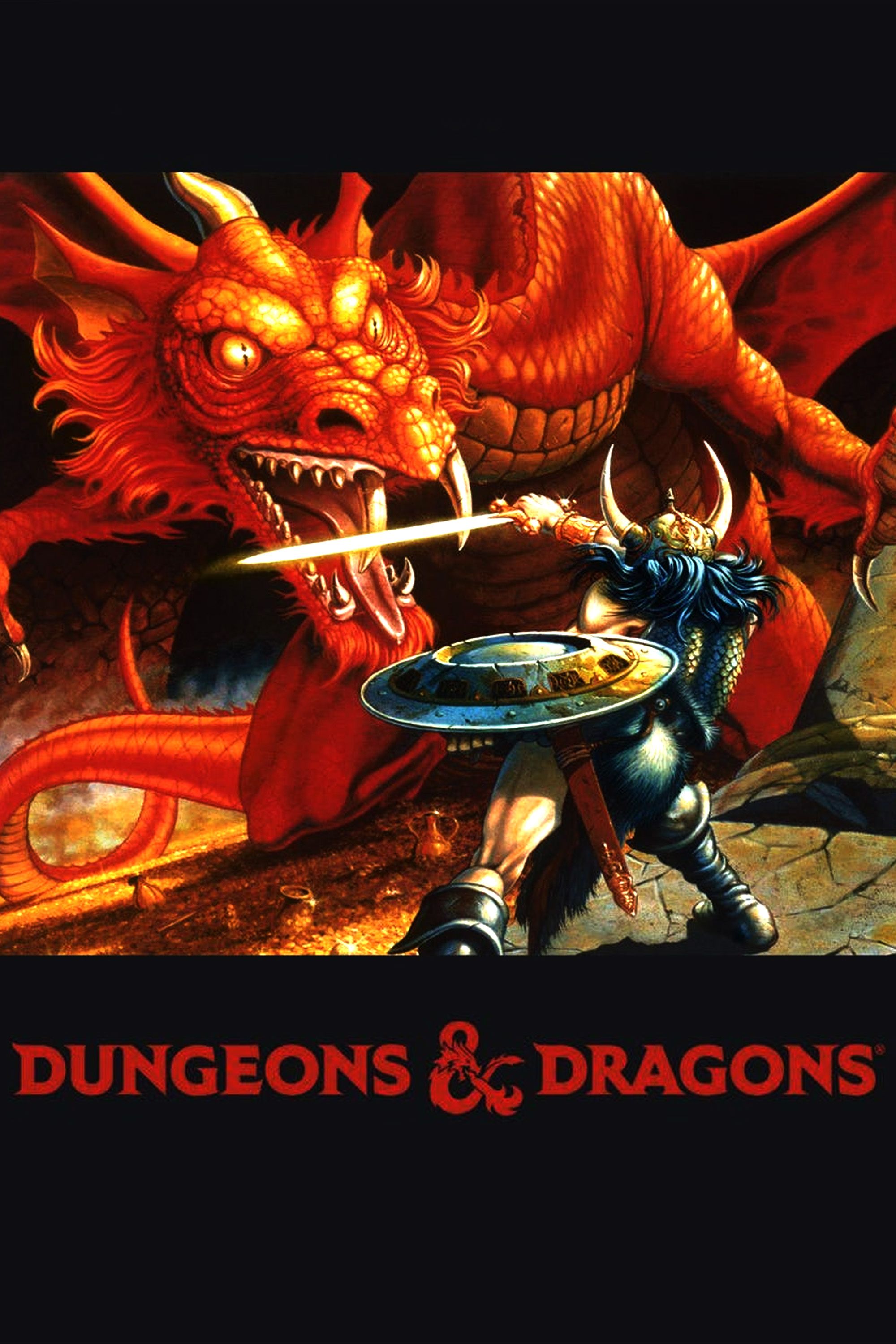
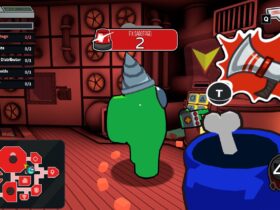



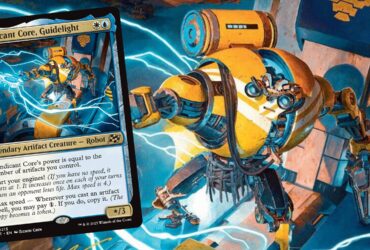

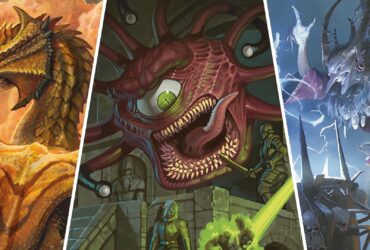
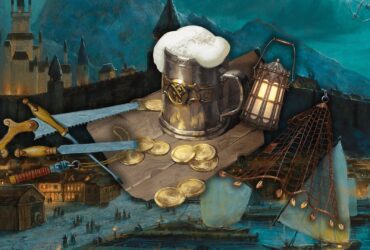
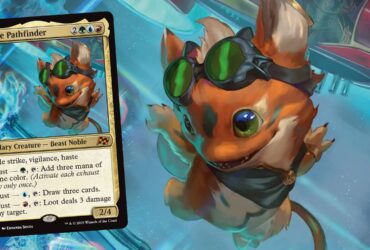

Leave a Reply